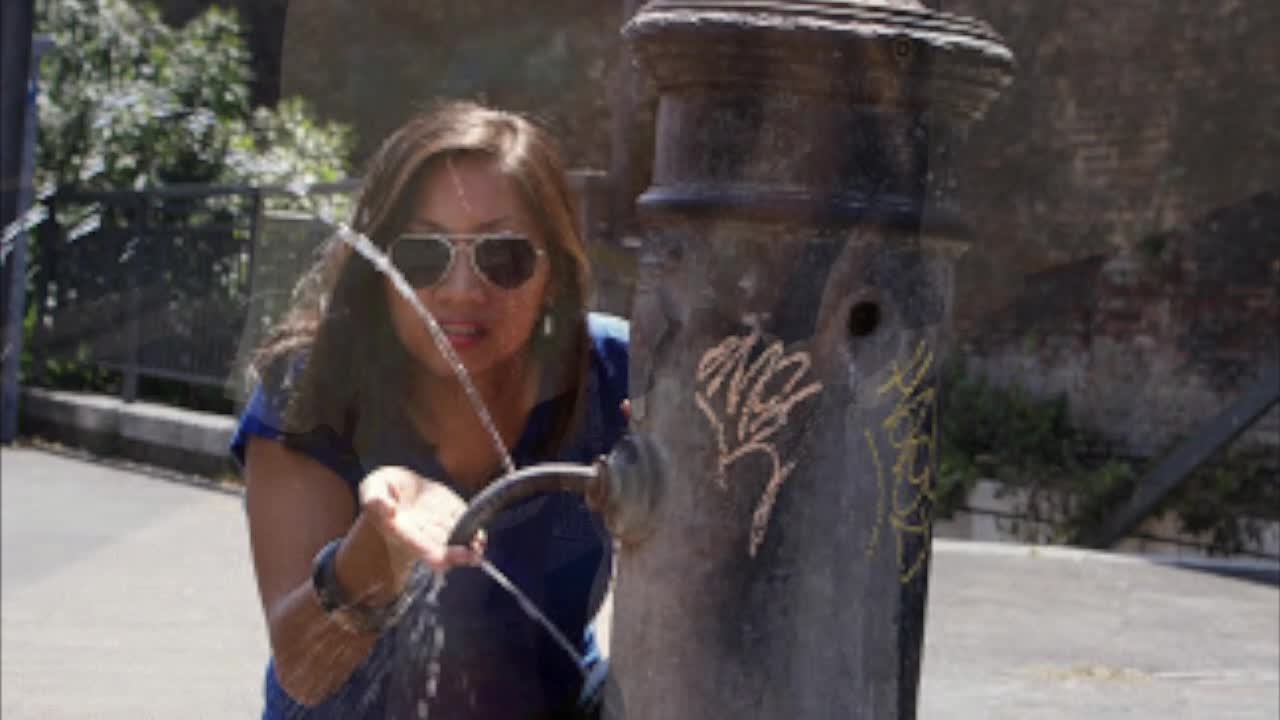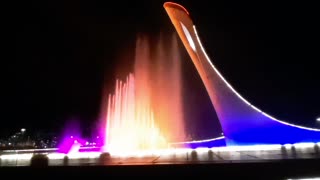Premium Only Content

Amazing Tricky Italian Fountains prove to be Quenching
Marilyn from Vancouver British Columbia recently took a once in a lifetime trip to Italy with her daughter. While at home, as an elementary school teacher and mother of two, Marilyn and her family also welcomes homestay students from around the world. One of these past visitors is Marcello, who just happens to be from Milan, Italy. Marilyn and her daughter had the great opportunity to be welcomed into the home of Marcello for a portion of their trip, and to have him as their personal tour guide of this amazing city. One of the main interests throughout Milan are its many, 481 drinking fountains that are unique to Milan. They are a bit tricky if you are not aware of just how they work and that they are definately safe to use. Le vedovelle (The widow trees) are the typical and famous fountains of Milan, which owe their name to the incessant stream of water that flows, similar to a perennial cry of widow. Inhabitants of Milan also use to say: "let's drink at the bar of the green dragon" because the tap has the shape of a dragon's head.
The material that constitutes them is the cast iron of the typical green color and were designed in 1931. The first fountain is that of Piazza della Scala, which differs from the others in the fact of being in bronze.The quantity of water supplied by the fountains is negligible compared to the water flow distributed by the Milanese aqueduct; in fact, compared to an instantaneous average flow of about 7500 liters / second, the flow rate of the fountains is equal to 8 l / s. Many may think that the widow trees generate waste of water, but this is not the case. The continuous water flow of the widow is not only useful for quenching thirst, but also has the important function of keeping the water always in motion, preserving its freshness and good quality in correspondence with the blind end pipes, the so-called "dead heads". Furthermore, the interruption of the flow could lead to the stagnation of water and contribute to the formation of dangerous bacterial flora around the mouth of the "dragon" from which water flows. Even the flow out of the fountains is not dispersed unnecessarily; on the contrary, the water is discharged into the sewer system, reaches the purifiers of Milan, is disinfected and then used by the agricultural consortia for irrigation of the fields south of Milan.All of those public fountains in Italy aren’t just for decoration – the locals drink from them, and you can too. Rome has more than 2,500 fountains around the city (there are several apps for finding them, or you can use Google Maps) and Venice has 122. In Rome, the short, cylindrical fountains are called fontanelle – little fountains – or nasoni, as some think the spout looks like a nose. These fountains contain very clean, cold, safe, tasteless water. Contrary to how public drinking fountains are perceived in the U.S., Italian fountains contain some of the freshest water in the country. Rather than buy multiple water bottles, do as the locals do and bring your own or buy just one disposable bottle and refill it from these fountains. If you don’t have a water bottle handy but still want a drink, go ahead – on some fountains, you can plug the side spigot with your thumb and the water will come out of a top spigot.
-
 0:58
0:58
LisaLisa87
4 years agoAmazing fountains in Olympic park, Sochi
52 -
 0:31
0:31
Amal Hermuz
3 years agoSunset Amazing
1021 -
 0:56
0:56
aznative13
3 years agoAmazing tunnel
130 -
 0:12
0:12
Funny animals
3 years agoThat's Amazing!
90 -
 0:53
0:53
Rachido
3 years agoAmazing thing
1981 -
 0:15
0:15
Amolaa
3 years agoAmazing Beautiful butterfly diamonds ring amazing
1262 -
 0:46
0:46
Dr Disrespect
3 days agoIt's not just a stream... it's an experience
714K3.22K -
 4:31:24
4:31:24
nickelsYT
9 hours ago $15.33 earned🔴LIVE-First Day on Rumble Warzone Area 99 Big Map...Proximity Fun
37.1K -
 9:18:07
9:18:07
cbsking757
9 hours ago $13.93 earned★FINISHING NEBULA BEFORE WE START THE ABYSS GRIND! #callofduty #blackops6
35.4K2 -
 5:14:30
5:14:30
SpartakusLIVE
9 hours agoGIGA Spart exudes PEAK MASCULINITY
58.7K3